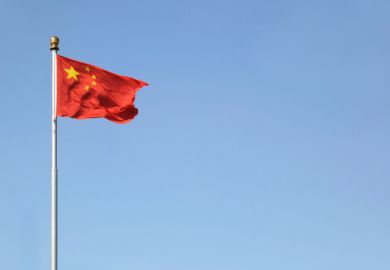I found the first three issues of the new Journal of Astronomical History and Heritage (JAHH) difficult to put down. Stephen J. Dick of the United States Naval Observatory opens with an essay on meteors, their cultural impact, their astrophysical origins and their impact on spacecraft. Meteors were thought to be atmospheric, perhaps related to lightning; but what was their origin? Virgil wrote, "Oft you shall see the stars, when wind is near /Shoot headlong from the sky and through the night /Leave in their wake long whitening seas of flame," implying a celestial origin and an atmospheric influence.
By 1798, meteor trails were triangulated at about 100km up and thus shown to be traced out at speeds not much below that of earth in its orbit. So their cosmic origin was established. But whether they originated from the moon, the asteroid belt or farther out is still under discussion.
David Hughes, reporting on the physical behaviour of cometary surfaces, goes back to the 2nd century BC, reminding us that "a comet as large as the sun" appeared shortly before the Achaean war and that at the birth of Mithridates "the heavens appeared on fire; the comet occupied the fourth part of the sky and its light exceeded the light of the sun".
A charming piece tells about Mary Evershed. Besides her pioneering research on solar prominences, she studied the astronomical allusions of Dante, publishing Dante and the Early Astronomers under her maiden name, M.A. Orr. Mary Bruck cites an extract; when Dante emerged in 1301 on top of the Mountain of Purgatory (in the South Pacific, antipodal to Jerusalem) this is what he saw in the East: "The fair planet which inspires love/Was making all the orient smile /Veiling the Fishes which were in her train." In 1500, when Amerigo Vespucci (1454-1512) was on the coast of Brazil and saw the Southern Cross, he wrote back to Florence saying that these must be the four stars mentioned by Dante.
Other biographical material includes a specialised description by Jay M. Pasachoff on Edmund Halley, who in 1715 prepared a pre-eclipse map showing the path of the moon's shadow over the British Isles and on into France and Germany. It was published on a single sheet for ten pence; one was auctioned by Christie's, New York, in 1998 for $15,000.
Lives of instrument makers also make interesting reading, especially as old telescopes never seem to die but remain known to today's astronomers. Telescope makers Thomas and Howard Grubb appear in an essay-cum-review by Ivan Nikoloff, while astronomical optician Robert Lundin is covered by John W. Briggs and Donald E. Osterbrock.
Bertrand Russell wrote: "It has always been correct to praise Plato, but not to understand him." We learn, from A. and D. Sinachopoulos, that Plato thought teaching astronomy was dangerous as it could lead to atheism: "When you and I present our proofs for the existence of gods and adduceI sun, moon, stars and earth - and argue they are gods and divine beings, the proselytes of these clever fellows (characterised earlier as "modern pundits") will say that these things are just earth and stones, and are incapable of caring for human affairs" ( The Laws ).
Further features include an informative obituary by Patrick Moore of Lieutenant-Commander H. Derek Howse, authority on maritime navigation and history of astronomy. The book reviews are excellent, as is the 20-page list of recent publications relating to the history of astronomy.
JAHH is a readable, scholarly, reasonably priced and indispensable aid to the history-of-science community and to amateur astronomers.
Ronald Bracewell is emeritus professor of electrical engineering, Stanford University, California, United States.
Journal of Astronomical History and Heritage: Two times a year - astral@psinet.net.au
Editor - Wayne Orchiston and John Perdrix
ISBN - ISSN 1440 2807
Publisher - Astral Press
Price - £12.50
Pages - -



